Circuit breakers are an important part of our electrical infrastructure. They protect us from dangerous electrical faults and keep our homes and businesses powered safely. Knowing how to read a circuit breaker can help you detect potential problems before they become major issues, saving time, money, and possibly even lives. In this article, we’ll answer some frequently asked questions about how to read a circuit breaker and provide some useful tips. Let’s get started!
What is a Circuit breaker panel?
It is typically located near the service entrance and houses all branch circuits that supply electricity to different areas of the building. The circuit breaker panel is usually labeled with each individual circuit breaker and its corresponding amperage rating. [3]
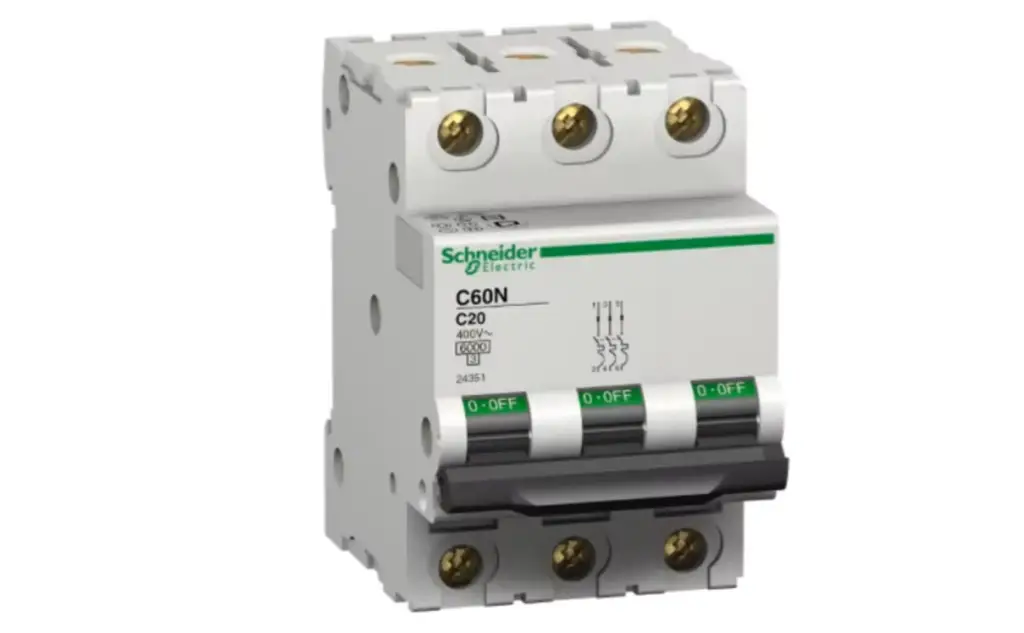
Components of an electric panel
Main breaker
The main breaker is typically the largest circuit breaker located in your electric panel. It is usually found at the top of the panel and it acts as a switch that can easily turn off all electricity to the house if there’s an emergency. [1]
Empty slots
Empty slots in your electric panel are not connected to anything. They’re used for adding new breakers if you need to add circuits or replace old ones. [1]
Sub-breakers
Sub-breakers, also called branch breakers, are the individual circuit breakers located below the main breaker. These smaller circuit breakers are responsible for protecting each individual circuit in your home.
When a sub-breaker trips, it’s an indication that there is a problem with the particular circuit. This could be caused by an overload of electricity, a short circuit or other electrical issues. To reset the breaker, you should press the switch down to the off position and then back up to the on position. [1]
Subpanels
Subpanels are secondary electric panels that some homes have. These panels typically include a main breaker just like the one in your main panel, as well as individual breakers for each circuit. Subpanels are usually installed when there is not enough space in the main panel to add new circuits or to move existing ones around. [1]
Identifying the Switches
When you look at a circuit breaker, there are several switches that you will need to recognize. The first switch is the main breaker. This switch allows power from your home’s electrical panel to flow into the circuit breaker. It is usually marked with an “on” or “off” indicator light.
Next, there are two smaller breakers located in the center of the circuit breaker. These breakers are labeled with a number that indicates the amount of amperage they can handle. This number is usually printed on a sticker attached to the breaker itself.
Finally, there is usually a ground fault indicator light located near the bottom of the unit. This light should come on when there is an imbalance in electrical current. [2]
ON or OFF
The very first step to reading a circuit breaker is to check whether it’s in the ON or OFF position. This will tell you if electricity is flowing through it or not. Generally speaking, when a switch is in the ON position, power is flowing throughout the circuit and when it’s in the OFF position, there’s no power or current coming through the circuit.
To check if a circuit breaker is in the ON or OFF position, you need to look at the switch itself. Most switches are labeled as either “ON” or “OFF” so that should be easy enough to identify. If it’s not labeled, then you can usually tell by looking at its position. If the switch is pushed in towards the circuit breaker box, then it’s ON and if it’s pulled out away from the box, then it’s OFF. [2]
Find the Breaker Box
When it comes to understanding how to read a circuit breaker, the most important first step is finding the breaker box. In most cases, the breaker box is located in a basement, garage, or utility room. It might even be outside near your home’s power meter if there is no interior access.
The breaker box generally takes the form of a metal box or cabinet with a door. Depending on the age of the home, you may have either a fuse box or a circuit breaker box. Fuse boxes are generally older and use glass fuses to control electricity flow. A circuit breaker box uses switches called breakers instead. [2]
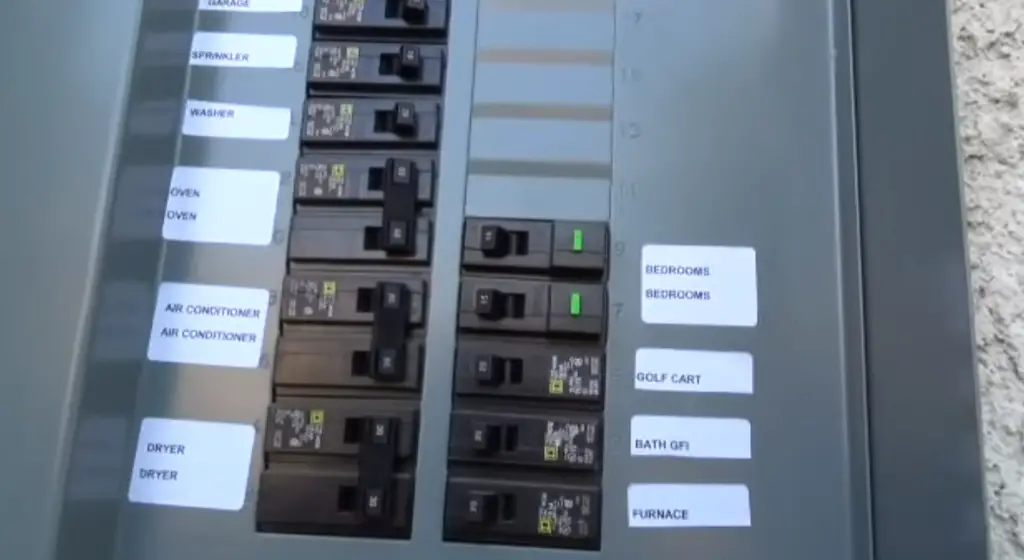
Checking the labels on the breaker panel
Before doing any work on the circuit breaker panel, it is important to check the labels of each breaker. This helps identify which one controls what in the home. The label should tell you the amperage rating of each circuit as well as what type of load – either lighting or receptacle – is connected to that breaker. It should also have a diagram showing how the individual breakers are connected. [2]
Understanding Circuit-Breaker Markings
Each circuit-breaker is marked with a number and a letter. The letter indicates the type of current that the circuit-breaker can handle. For example, A stands for alternating current and D stands for direct current. The number usually represents the amperage rating or size of the circuit-breaker.
For instance, a 15A circuit breaker has an amperage rating of 15A, or 15 amps. The higher the number, the more current it can handle. For heavier-duty circuits (such as those with large electrical appliances), you may need a larger circuit-breaker with a higher amperage rating. Always use the same type and size of circuit-breaker when installing a new one.
The other markings you may see on your circuit-breaker include the manufacturer’s name and/or logo, as well as certification marks. These indicate that the product has been tested and approved for safety by a recognized testing authority in your area. [2]
What Do the Numbers and Letters on a Circuit-Breaker Mean?
Circuit breakers are one of those household items that we all have but don’t really know much about. Have you ever wondered, “What do the numbers and letters on a circuit-breaker mean?”
The numbers and letters typically represent the voltage and current rating of the circuit breaker. This is important to determine what type of amperage the circuit breaker can handle. For example, a 15A/120V breaker means it can handle up to 15 amps at 120 volts.
It is also important to ensure that your circuit-breaker has the correct ratings for your needs. If you have an appliance or device that requires more than what your current circuit-breaker is rated for, you may need to upgrade.
Another way of identifying circuit breakers is by the number and letter combinations printed on the case. Each combination typically represents different features such as interrupting rating, trip time, etc. Knowing these will help you determine which type of breaker best suits your requirements. [2]
What to Do If the Switches Aren’t Labeled?
If the circuit breaker is not labeled, you can still determine which switch is “on” and which is “off” by using a voltmeter or multimeter. When testing the circuit breakers with a voltage meter, set it on its highest AC volts setting. Touch each terminal of the breaker switch with one probe of the meter to check for voltage. If a breaker is connected to the power, it will register 120 volts on the meter’s display; if it’s off, no voltage will be detected. Make sure that all switches are “off” before you begin working with them. [3]
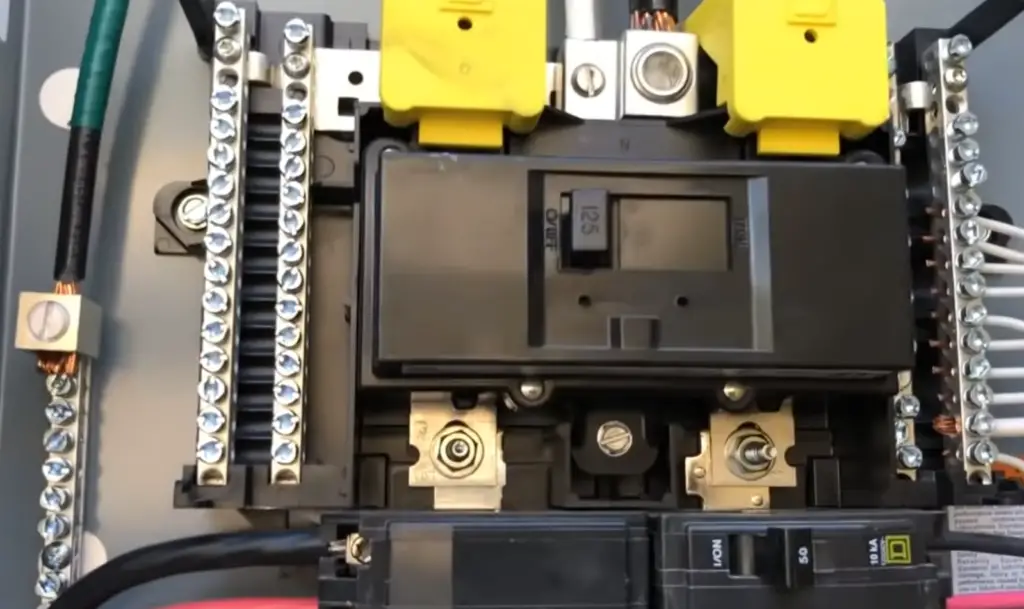
How to Reset a Tripped Circuit Breaker?
If you find that a circuit breaker has tripped, it’s important to understand the proper way to reset it. Here’s what you need to do:
- Make sure that all appliances and devices connected to the affected circuit are switched off before attempting to reset the breaker. This will help ensure your safety from electrical shock.
- Locate the circuit breaker switch. This is usually located in a box near your electrical panel.
- Identify which circuit breaker has tripped by looking at the individual switches and noting if one of them is no longer in line with all the others. A tripped breaker will be slightly displaced or turned off from its original position.
- Push the switch firmly back into its original position. This should reset the breaker and restore power to your circuit.
- Test the affected circuit by plugging in a device or turning on an appliance. If it works, then you have successfully reset the breaker. [3]
When You Need to Read Your Circuit Breaker Panel?
Circuit breakers are an important part of electrical safety in your home or business. Knowing when to read your circuit breaker panel can help you troubleshoot problems and make sure all of the circuits in your building are working properly.
Some signs that you may need to read your circuit breaker panel include: flickering lights, blown fuses, tripped breakers, or an electrical smell. If you are experiencing any of these issues, it is important to read your circuit breaker panel and determine the cause of the problem before attempting any repairs. [3]
Safety precautions when handling a circuit breaker
Follow manufacturer’s instructions
Before attempting to read a circuit breaker, it is important that you familiarize yourself with the manufacturer’s instructions. This will provide helpful information on the components of the circuit breaker and how they are used.
Turn off the power
Before you begin, it is essential that you turn off the power to the circuit breaker. This will ensure your safety and prevent any damage to the device. After turning off the power, double check with a voltage tester that there is no electricity flowing through the circuit breaker before continuing. [4]
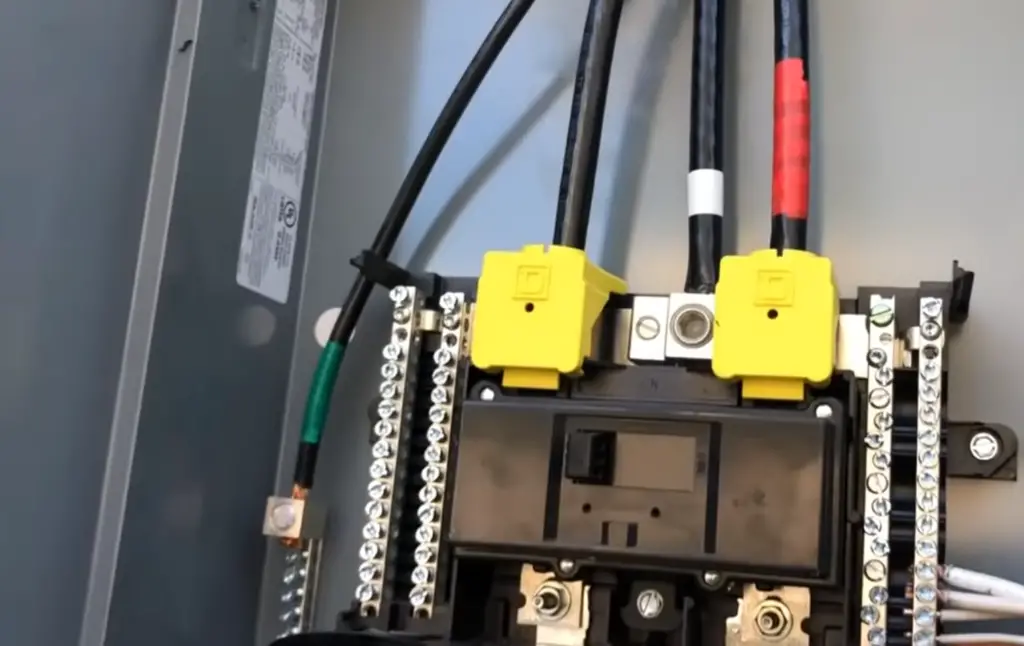
Wear protective gear
It is important to wear protective gear when handling a circuit breaker. You should always wear rubber gloves, safety glasses and long-sleeve clothing. This will protect you from any dangerous sparks or electrical currents. [4]
Branch circuits
Inspecting the branch circuits on a circuit breaker is an important step in reading the device. These are identified by the numbers printed on the breaker itself. Each number corresponds to a single circuit and can tell you how much electrical current each circuit is using, as well as if any overloads or shorts are present. [5]
Trips
Trips are the buttons on a circuit breaker that will trip the device when an electrical overload occurs. When you press these buttons, it will cause the circuit to break and prevent further damage. It is important to inspect these trips and ensure they are working properly. [5]
Circuit breaker specifications
When reading a circuit breaker, it is important to take note of the specifications. This includes the voltage and amperage ratings, as well as any additional information such as protective measures or overload protection. Knowing these details will help you to identify any potential problems with your circuit breaker. [5]
Access
In order to inspect the wiring inside of a circuit breaker, you will need to open up the device. Once you have done so, take care not to touch any live wires and use only insulated tools when making adjustments. After completing your inspection, make sure that all wiring is properly secured before closing up the circuit breaker again. [5]

FAQ
What do the numbers on circuit breakers mean?
The numbers on a circuit breaker denote the amperage rating of the breakers. This number indicates how much electrical current the circuit breaker can handle before it trips and shuts off power to prevent any further damage or a potential fire hazard.
How do you calculate breaker size?
To calculate the size of a circuit breaker, you will need to know the total wattage used by all of the devices connected to that particular circuit. To do this, simply multiply the voltage (measured in volts) by the amperage (measured in amps). The result will be measured in watts. Once you have your wattage rating, you can then determine the correct amperage rating for your circuit breaker.
How do you read a breaker with a multimeter?
If you need to measure the voltage of a circuit breaker, you can use a multimeter. To do this, first make sure that the power is off so that no electric current is running through it before attempting any measurements. Then, connect one lead of the multimeter to one terminal on the circuit breaker and attach the other lead to the other terminal. Set the meter to read voltage before you take the reading. The voltage measurement should be written on the circuit breaker itself, and it is usually expressed in volts (V).
How many ohms should a breaker read?
The ohms reading of a circuit breaker will depend on the size and type of the breaker. Generally, breakers should read between 0-300 ohms when they are not in use. If the reading is higher than that, it could be an indication that there is something wrong with the breaker and it may need to be replaced. Make sure to always consult a certified electrician if you are unsure.
How do you read circuit breaker specifications?
Circuit breaker specifications will usually be printed on the breaker itself, and they can include information such as voltage rating, amperage rating, interrupting capacity (the amount of electrical current it can handle before tripping), trip time (how long it takes to trip after reaching its limit), and other important details. It is important to read these specifications carefully before installing or replacing a circuit breaker in order to ensure that the breaker can safely handle whatever electrical load it is being used for.
What is 80% rating of circuit breaker?
The 80% rating of a circuit breaker is the amount of current that the breaker can handle without tripping. This number is usually printed on the breaker itself, and it should not be exceeded. For example, if a 15 Amp breaker has an 80% rating of 12 Amps, then it will trip if the current through it reaches or exceeds 12 Amps.
What is 6k or 10k MCB?
6k or 10k MCB stands for 6,000 Amps or 10,000 Amps Miniature Circuit Breakers. These are normally used to protect electrical circuits from damage due to overcurrents and short circuit conditions. They are also used in household appliances where they provide protection against overloads and short circuits.
How do you identify DC MCB?
DC MCBs (Miniature Circuit Breakers) can be identified by their size and markings. They are typically much smaller than AC MCBs, and they will usually have a DC voltage rating printed on them such as 12V or 24V. Additionally, the name “DC” should be printed somewhere on the breaker to indicate that it is designed for use with a DC power supply.
Useful Video: How to wire a breaker box – Installing new panel
Conclusion
Reading a circuit breaker correctly is not as difficult as it may seem. It’s important to be familiar with the different parts of the device, as well as understanding how it functions. With some practice, you should soon become comfortable reading a circuit breaker.
If you have any doubts about your ability to read a circuit breaker, or if you’re unsure about any part of the process, it’s best to consult a qualified electrician. They will be able to help you accurately identify and interpret the circuit breaker correctly.
At the end of the day, being able to read a circuit breaker correctly could save your life. Whether you’re dealing with an existing installation or installing one yourself, make sure that you always understand how to read a circuit breaker. Knowing how to identify and interpret the markings on a circuit breaker correctly could make all the difference in an emergency situation.
Thanks for reading! We hope you now have a better understanding of how to read a circuit breaker correctly. Stay safe and ensure that your electrical installations are installed, inspected, and maintained according to regulations!
References
- https://tameson.com/pages/read-circuit-breaker#
- https://mrelectric.com/blog/read-electrical-panel
- https://expresselectricalservices.com/how-to-read-your-circuit-breaker-panel/
- https://www.asutpp.com/how-to-read-circuit-breaker-markings-and-labels.html
- https://www.rgelectric.net/blog/how-to-read-your-circuit-breaker-panel/





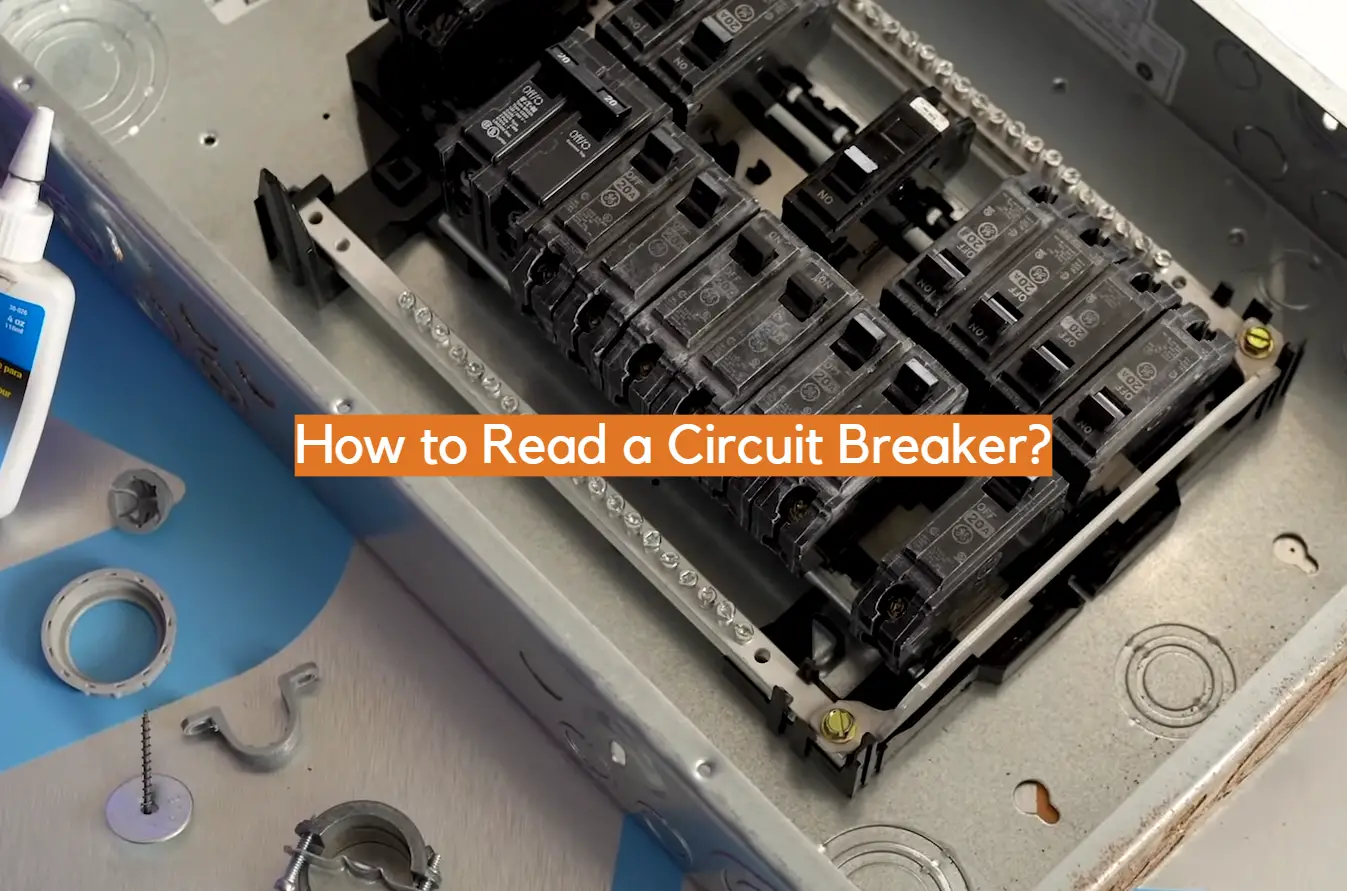



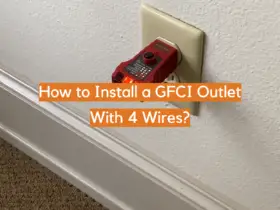

Leave a Reply